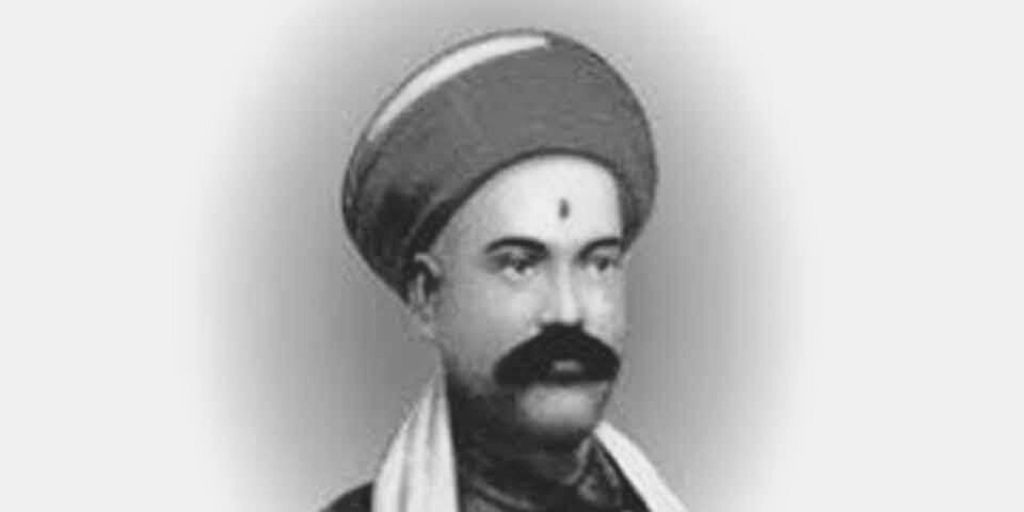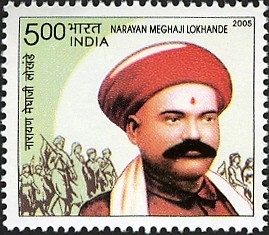
Remembering Narayan Meghaji Lokhande – Father of Trade Union Movement in India
As the labour day is coming near, I sat down to pen contribution, which is little known, of Bahujan icon Narayan Meghaji Lokhande, in championing the cause of workforce in the pre-independence period in India.
Narayan Meghaji Lokhande born in 1848 in Thane, Maharashtra, is the father of the trade union movement in India. He was born into a poor family but that did not stop him from achieving great things. He belonged to ‘phulmali’ community. His family was in the business of flowers for their livelihood so he followed the same. He was greatly influenced by Bahujan icon Mahatma Jyotirao Phule and his followers. During schooling years, he was engaged in social activities in Bombay. He worked as a storekeeper in a textile mill in Bombay,
In 1814 the phulmali community of Bombay invited Mahatma Phule to deliver a lecture. Influenced by Jotiba Phule’s teachings, Lokhande became an active member of Satyasodhak Samaj. He formed a strong network among mill workers, people from different caste communities joined him including many builders and contractors. With the help of some of his Telegu friends, he managed publishing of ‘Deenbandhu’ newspaper in 1880, the newspaper became the voice of the workers’ class during that time.
Along with Lokhande, Jyotirao also addressed the meetings of the textile workers in Bombay. Lokhande started the first labour association in India — ‘Bombay Mill Hands Association’.
The newspaper regularly highlighted the ineffective management and problems of workers, explaining the pathetic conditions in which workers had to work. Lokhande’s writings touched many workers’ hearts and had a great influence on revolutionaries.
Read also – Dr. Ambedkar and Labour Day

The government of India issues postal stamp in the memory of Narayan Meghaji Lokhande in 2005.
Factory owners and management used to exploit workers to the extent that many used to die inside the factories while working. It was the period of industrialization and many cotton, textile and jute mills were coming up in the Bombay area. Many farmers, unable to survive in villages were moving the cities for work but factory owners in an attempt to make more money used to put workers in extreme conditions.
In the mills, the workers were forced to work from sunrise to sunset, the working hour was 10-12 hours in winter and 13-14 hours during summer times. The opening time of industry was not fixed, the workers gathered in front of the gate. Some workers used to sleep outside the mill gate to avoid being late in the morning. No fixed hours of work were allocated to workers and there were no lunch breaks. Workers had to eat their lunch while working, neither mill owners provided any kind of sanitation or basic facilities to the workers – they had to go for long-distance walks to use toilets.
While in machinery operation high temperatures were common which affected the health of workers negatively. Even when factories were closed for maintenance, no workers were given holidays. They had to come to clean and repair. In addition to men, women and children were also employed in factories and exploited as well.
The first factory act was passed in 1881 by the Government of India. In 1884, for the first time a trade union was established under the name of ‘Bombay Mills Hands Association’, then Narayan Lokhande became its president. Through the association, he first talked to the British to change the Factories Act passed in 1881. However, the government rejected his demands outright. In the same year, Lokhande organized the country’s first labour assembly. He raised the demand for the Sunday holiday for the workers. Along with this, the proposal to have a break for food, to fix working hours, paid leave to the worker in case of an accident at work, and compensation to his dependents in the event of the death of a worker in an accident. The proposals for getting pension were approved.
A petition was prepared for all these demands, in which 5500 workers signed. As soon as the petition reached the factory commission, the mill owners started protesting. The labourers working in their mills were harassed by giving them double the capacity and workload.
When Lokhande saw that his petition was ignored by the government, he started a movement throughout the country that was supported by mill workers. He went to different parts of the country and held meetings with the workers. The most important of these meetings was held in 1890 at the Race Course Grounds in Bombay, in which about 10,000 workers from Bombay and nearby districts took part. The effect of this meeting was that the workers refused to work in the mills.
Now this patriotic movement had taken the form of country-wide strikes. Many factories in Surat, Ahmedabad, Sholapur, Nagpur including Mumbai were locked.
Eventually, the government was starting to feel the hear of the protests and bowed down in front of the demands of the workers. As a result, the Factory Labor Commission was formed, in which the workers were represented by Lokhande. After this, the workers started getting food breaks, and working hours were fixed, but the weekly holiday was still to be fixed.
Lokhande started the labour movement once again in 1890. Many female employees also participated in this struggle. Then on 10 June 1890, India got its first weekly holiday on Sunday. The contribution of Narayan Meghaji Lokhande in the development of labour moment and trade unions in India is ignored as should be recognized.
Some of the rights mill workers got because of Narayan Meghaji Lokhande were –
- Mill workers should get a weekly holiday on Sunday.
- In the afternoon, workers should be entitled to half-hour recess.
- The mill should start working from 6:30 in the morning and close by sunset.
- The salaries of the workers should be given by the 15th of every month.
Author – Kashyap Dipchand




+ There are no comments
Add yours